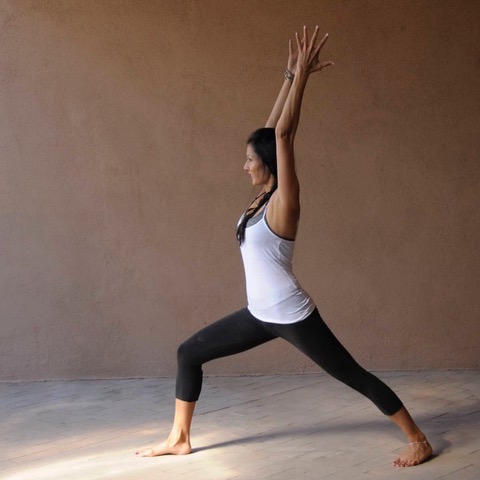Good Vibrations
Our bodies are made of vibration. Our bodies respond to vibration.
Different organs in the body respond to different sounds or electromagnetic waves. Music, or sound waves, directly effect energy vortexes within the body known as Chakras. Chakras correlate with nerve plexuses in the spinal column, abdomen, and cranium.
A nerve plexus is a network of intersecting nerves with sensory and motor fibers. The Chakras are areas of high energy within the nervous system.
There is a branch of science called Psychoacoustics, the study of sound on the nervous system. Neuroscientist, Brian Pasley of UC Berkeley, published a study in 2012 that decoded the brain’s electrical activity to sound. The conclusion was the brain breaks down sound into frequencies within different neural regions.
In specific spots in the auditory cortex, the neurons were tuned for specific tones.
The brain has around 100 billion neurons, cells that are sending and receiving messages throughout the body. These nerve cells respond to specific sounds that allow them to function in their optimal state. Simply put, if a heart cell receives the vibration it is made of, then the heart will be healthy.
VIBRATIONS
Tones have been created to respond to each tissue in the body. A system called Quantum reflex analysis tested the bioenergy of the body’s tissues.
The frequencies, or sound waves, for all of the human organs have been measured. Each cell in the body has a frequency unique to a particular region of the body.
When a cell of human tissue is healthy it can have a higher frequency than its baseline, when ill, it can have a lower frequency than its baseline.
RHYTHMS OF NATURE
The Solfeggio frequencies align us to the rhythms of nature. These tones penetrate the conscious and subconscious mind.
The ancient Solfeggio scales originated from the Gregorian monks, around 900-1000 AD. They were reintroduced into society by Dr. Joseph Puleo in 1974.
Dr. Puleo used tuning forks to measure the sequence of tones that effect the body. He measured the sound with a frequency (speed of vibration) in Hertz (Hz). He determined the frequency of sound at which the forks vibrate to stimulate our cells.
The Solfeggio scale comprises electromagnetic waves that range from 174Hz-963Hz. This range of sound is known for healing abilities. The Solfeggio tones assist the energy channels (chakras) to open.
Lower tones stimulate the lower body and higher tones stimulate the upper body.
By using a sound wave that is the same as the sound wave measured for a group of cells, we can stimulate those cells for natural healing. This is known as sympathetic resonance. This is when a vibratory body (in this case human tissue) responds to external vibrations that have a harmonic likeness.
We can use specific sound frequencies to stimulate cells in the body to function at their optimal state.

Let’s Listen…
Music makes us FEEL.
When we feel we release energetic blocks in our nervous system. This rewires our nervous system and changes the physiology of our body.
Let’s bring the Manipura Chakra, known as the Solar Plexus, into balance. This chakra is located around the navel up to the breastbone. It comprises the stomach, liver, integument system (skin), pancreas and small intestine.
This energy center is the source of personal power, self esteem, and transformation. It allows us to meet challenges and take action. We learn self discipline, responsibility, and strength.
Physically, this energy center allows for healthy digestion and a healthy immune system. It creates a strong, lean body. Imbalances within this center cause conditions such as diabetes, celiac’s disease, liver problems, obesity, vision related issues, arthritis, hair loss, and skin conditions.
The cells of the solar plexus vibrate at an electromagnetic frequency of 528 Hz.
Listen to the vibration of 528 Hz while in meditation, reading, exercising, or working.
Specific asanas (yoga poses) stimulate the Solar Plexus to function at its best. Here are a couple Warrior poses you can practice daily with music.

Virabhadrasana I/Warrior I
~ Begin with your feet hip distance apart. Bring your left foot back.
~ Keep the hips neutral. Keep the back foot flat on the floor and at a 45 degree angle. Bring weight on the outer edge of the foot.
~ Bend into the front knee, keeping the knee over the ankle.
~ Bring your arms up, palms facing in. Rotate upper arms so thumbs point outward.
~ Keeping the hips neutral, breathe deeply into pose. Slightly bring back hip forward and front hip back to square hips even more.
~ Put weight in front heel and keep shin parallel to floor.
~ Take a deep inhale and deep exhale. On an inhale you can sit even deeper into front hip. Maintain the knee over the ankle.
~ Stay in pose for 10-15 breaths.
~ Release arms, come back to standing with feet together. Repeat on other side.

Virabhadrasana III/Warrior III
~ Start with a High Lunge position, right leg forward, front knee bent. Left leg back on the ball of your foot. The hips are squared forward.
~ Be mindful the front knee is in line with the front ankle.
~ Bring your hands to your hips.
~ Start to put more weight into your front foot and bend deeper into your front knee, bringing the knee past the ankle.
~ With your next inhale, lift your back leg off the floor and raise your leg to hip height.
~ Keep the back leg thigh parallel to the floor. Keep the front leg straight.
~ Flex the back foot. Firmly press the front foot into the floor.
~ Keep your neck long and in line with your spine. If you feel comfortable, you can slightly raise your neck to gaze forward.
~ Find a location for your gaze and concentrate on this location.
~ When you feel stable, begin to bring your arms forward at shoulder height with your palms facing each other.
~ Stay in this pose for 5-10 breaths
~ To come out of the pose, bring your hands to your hips, bend into the front knee as you place your back foot on the ground returning to High Lunge position.
Repeat on other side balancing with your left foot forward.
Enjoy feeling the Rhythms in your Body
Return to Blog
References: Reconstructing speech from human auditory cortex; Cognitive Science Research Laboratory; 10.1371/journal.pbio.1001251, 2012, Brian Pasley; scienceofimagery.com; Solfeggio Frequencies
Photocredits: Cover:Unsplash(@jeremythomasphoto); Yoga: Zayne Diamond (www.flyingzphotography.net), Light Image: Alan Osterholtz (Osterholtz Photography)
Wikipedia – Sympathetic Resonanance
